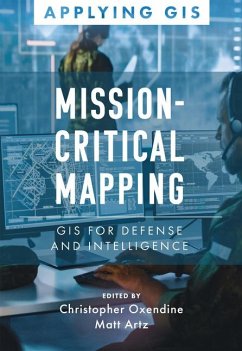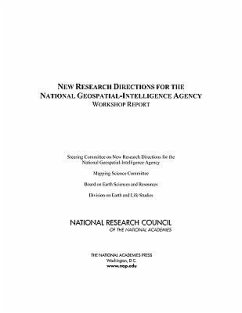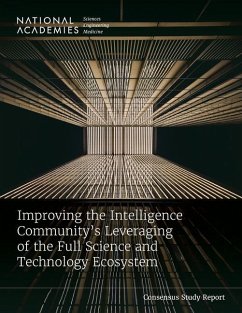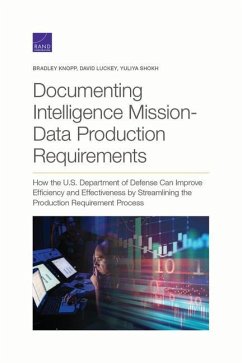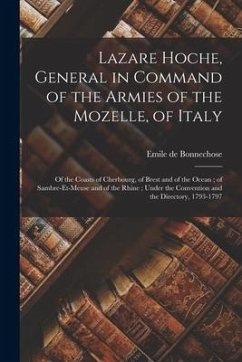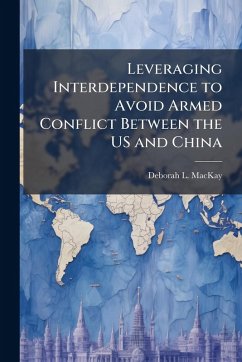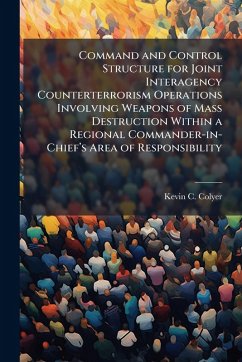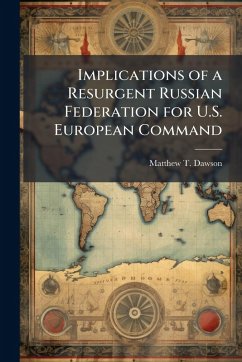
Leveraging Geospatial Intelligence (GEOINT) in Mission Command
Versandkostenfrei!
Versandfertig in über 4 Wochen
14,99 €
inkl. MwSt.
Weitere Ausgaben:

PAYBACK Punkte
7 °P sammeln!
The federal government response to Hurricane Katrina demonstrated a vital need for the military to improve the process for assessment, response, and decision-making for all organizations involved. Geospatial Intelligence (GEOINT) is an emerging intelligence discipline that provides detailed data analysis, an assessment of the operational environment, and a means to investigate problems that may emerge. GEOINT is the exploitation and analysis of imagery and geospatial information to describe, assess, and visually depict physical features and geographically referenced activities. By examining th...
The federal government response to Hurricane Katrina demonstrated a vital need for the military to improve the process for assessment, response, and decision-making for all organizations involved. Geospatial Intelligence (GEOINT) is an emerging intelligence discipline that provides detailed data analysis, an assessment of the operational environment, and a means to investigate problems that may emerge. GEOINT is the exploitation and analysis of imagery and geospatial information to describe, assess, and visually depict physical features and geographically referenced activities. By examining the use of geospatial information systems by civilian organizations use of during Hurricane Katrina, it was possible to observe that the U.S. Combatant Commands are underutilizing GEOINT's potential as a tool for information analysis. Faced with new and complex problems, the military must adapt not only its methods for understanding complex problems but also must integrate new technologies to inform Mission Command. GEOINT provides the decision-maker or commander the ability to attain shared understanding of the operational environment. Joint and Army planning both recognize GEOINT but do not provide a vehicle to reveal its capabilities or how those capabilities can assist the commander with situational understanding. Joint and Army planners in COCOMs must follow NORTHCOM's lead and exploit GEOINT modeling capabilities in preparing for new and emerging threats. The employment of GEOINT modeling capabilities provides decision-makers the ability to visualize the environment prior to conducting operations. The military planners'; limited understanding of GEOINT's capabilities and their tendency to focus on the limited number of useful data sources retards exploitation of geospatial intelligence capabilities in military operations planning. The value of GEOINT lies in its ability to bring analysis to inform all stages of commander visualization in mission command. This work has been selected by scholars as being culturally important, and is part of the knowledge base of civilization as we know it. This work was reproduced from the original artifact, and remains as true to the original work as possible. Therefore, you will see the original copyright references, library stamps (as most of these works have been housed in our most important libraries around the world), and other notations in the work. This work is in the public domain in the United States of America, and possibly other nations. Within the United States, you may freely copy and distribute this work, as no entity (individual or corporate) has a copyright on the body of the work. As a reproduction of a historical artifact, this work may contain missing or blurred pages, poor pictures, errant marks, etc. Scholars believe, and we concur, that this work is important enough to be preserved, reproduced, and made generally available to the public. We appreciate your support of the preservation process, and thank you for being an important part of keeping this knowledge alive and relevant.




